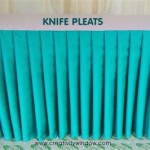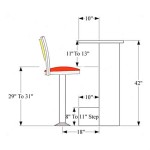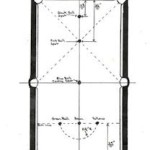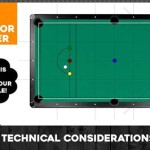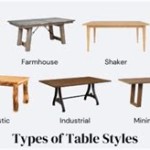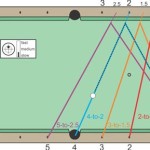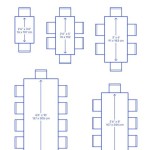Types of Dining Table Leaves: Expanding Your Dining Space
Dining tables are often the centerpiece of mealtime gatherings, but the size that comfortably accommodates a small family on a regular basis may prove inadequate for larger events and celebrations. Dining table leaves offer a practical solution, providing the versatility to expand the table surface as needed. Different types of leaves exist, each with its unique mechanism and aesthetic appeal. Understanding the various types of dining table leaves allows consumers to select the option that best suits their needs and complements their existing décor.
The primary purpose of a dining table leaf is to increase the overall length and surface area of the table. This added space can comfortably accommodate more diners, provide more room for serving dishes, or simply create a more spacious and inviting dining experience. The type of leaf mechanism chosen will affect the ease with which the table can be expanded and contracted, its storage requirements, and its overall aesthetic integration with the table's design.
Butterfly Leaf Mechanisms
Butterfly leaf mechanisms, also known as self-storing leaves, are characterized by their hinged design. The leaf is folded in half and stored directly beneath the table's main surface. When needed, the table is typically pulled apart, revealing the stowed leaf. The leaf is then unfolded, resembling the wings of a butterfly, and locked into place to create a continuous tabletop surface.
A significant advantage of butterfly leaves is the convenience of integrated storage. Because the leaf is stored directly within the table, there is no need to find separate storage space, which can be a significant benefit for individuals with limited storage options. This integrated storage also minimizes the risk of losing or misplacing the leaf. Furthermore, the leaf is readily accessible, simplifying the process of expanding the table when unexpected guests arrive.
However, butterfly leaves can sometimes present challenges in terms of aesthetic integration. The folded leaf must fit within the table's frame, which can necessitate a slightly thicker table apron or a less streamlined design. The hinge mechanism can also be visible, particularly when the table is fully extended, potentially detracting from the table's overall appearance. Furthermore, the weight of the leaf and the mechanics of the folding and unfolding process may require some physical effort, particularly for larger or heavier tables.
Butterfly leaves are commonly found in smaller to mid-sized dining tables, where the practicality of self-storage outweighs the potential aesthetic compromises. They are a particularly suitable option for individuals who frequently expand their dining table and value convenience above all else.
Drop-In Leaves
Drop-in leaves, also referred to as insert leaves or apron leaves, are the most common and versatile type of dining table leaf. These leaves are typically rectangular or oval-shaped and are inserted into the center of the table after the two halves of the tabletop have been pulled apart. The leaf sits flush with the main tabletop, creating a seamless and uniform surface.
Drop-in leaves offer significant flexibility in terms of size and number. Tables can often accommodate multiple drop-in leaves, allowing for substantial expansion of the dining surface. This makes them a suitable choice for individuals who regularly host large gatherings. Furthermore, drop-in leaves can be custom-made to match the exact dimensions, wood type, and finish of the existing tabletop, ensuring a cohesive and aesthetically pleasing look.
However, drop-in leaves require separate storage space when not in use. This can be a drawback for individuals with limited storage options. Furthermore, the process of inserting and removing drop-in leaves can be more time-consuming compared to self-storing options. The alignment of the leaves with the main tabletop requires careful attention to ensure a smooth and even surface.
Drop-in leaves are widely used in a variety of dining table styles, from traditional to contemporary. Their versatility and ability to accommodate multiple leaves make them a popular choice for both residential and commercial settings. For those who prioritize aesthetic integration and the ability to significantly expand their dining space, drop-in leaves offer an ideal solution, provided that adequate storage space is available.
Gateleg and Drop Leaf Designs
Gateleg and drop leaf tables feature leaves that are hinged along the sides of the main tabletop. When not in use, the leaves are folded down, supported by hinged legs, known as gates, that swing out to provide support when the leaves are raised. This design is particularly space-saving when the leaves are down, making it an ideal choice for smaller dining areas or multi-purpose rooms.
The primary advantage of gateleg and drop leaf tables is their compact footprint. When the leaves are folded down, the table occupies minimal space, allowing for greater flexibility in room arrangement. This makes them a popular choice for apartments, studios, and other small living spaces. Furthermore, the integrated support system of the gatelegs ensures stability when the leaves are raised.
However, gateleg and drop leaf tables typically offer less expansion than drop-in leaf tables. The size of the leaves is limited by the dimensions of the table's frame. The mechanism can also be less robust than other leaf types, potentially limiting the weight-bearing capacity of the extended surface. The hinged legs can also interfere with legroom, particularly for diners seated near the corners of the extended leaves.
Gateleg and drop leaf tables are often found in antique or vintage furniture styles. While contemporary designs also exist, the design aesthetic inherently lends itself to more traditional or rustic settings. They are particularly well-suited for individuals who value space-saving functionality and appreciate the charm of a classic furniture design.
Extension Table with Integrated Sliding Mechanism
Extension tables with integrated sliding mechanisms represent a more contemporary approach to expanding dining tables. These tables typically feature a hidden leaf or leaves that are stored beneath the main tabletop and are revealed through a smooth sliding or unfolding mechanism. The mechanism is often concealed within the table's frame, creating a seamless and modern aesthetic.
The primary advantage of this design is its ease of use and aesthetic integration. The sliding mechanism allows for effortless expansion of the table, often with minimal physical effort. The hidden storage of the leaves ensures a clean and uncluttered appearance, both when the table is compact and when it is fully extended. This type of table often offers a very clean, modern look.
However, these tables tend to be more complex to manufacture and can therefore be more expensive than tables with simpler leaf mechanisms. The complexity of the sliding mechanism can also make repairs more challenging. The size and number of leaves are often limited by the internal storage space, potentially restricting the overall expansion capacity.
Tables with integrated sliding mechanisms are typically found in contemporary and modern dining room settings. The streamlined design and effortless functionality make them a popular choice for individuals who prioritize aesthetics and ease of use. They are particularly suitable for those seeking a seamless transition between compact and expanded configurations, without compromising on style.
Ultimately, the selection of a dining table leaf type is a decision that should be based on individual needs, preferences, and lifestyle. Considerations should include the frequency of use, the desired expansion capacity, storage limitations, aesthetic preferences, and budget. By carefully evaluating these factors, consumers can choose a dining table leaf that enhances their dining experience and complements their overall home décor.

Extending Table Leaves How To Grow Your Dining Makers Furniture

Types Of Extendable Dining Tables Furniture Showcase

Distinctive Antique Dining Table Styles And Features Lovetoknow

Extensions For Dining Tables And Their Types

Dining Definitions Our Guide To Popular Types Of Tables Their Features Woodstock Furniture Mattress

Guide To Drop Leaf Tables

4 Types Of Extendable Dining Tables Suitable For Your Limited Home Spaces The Architects Diary

Extending Table Leaves How To Grow Your Dining Makers Furniture

Clever Table With Leaves For Easy Storage

How To A Dining Table Leaf

